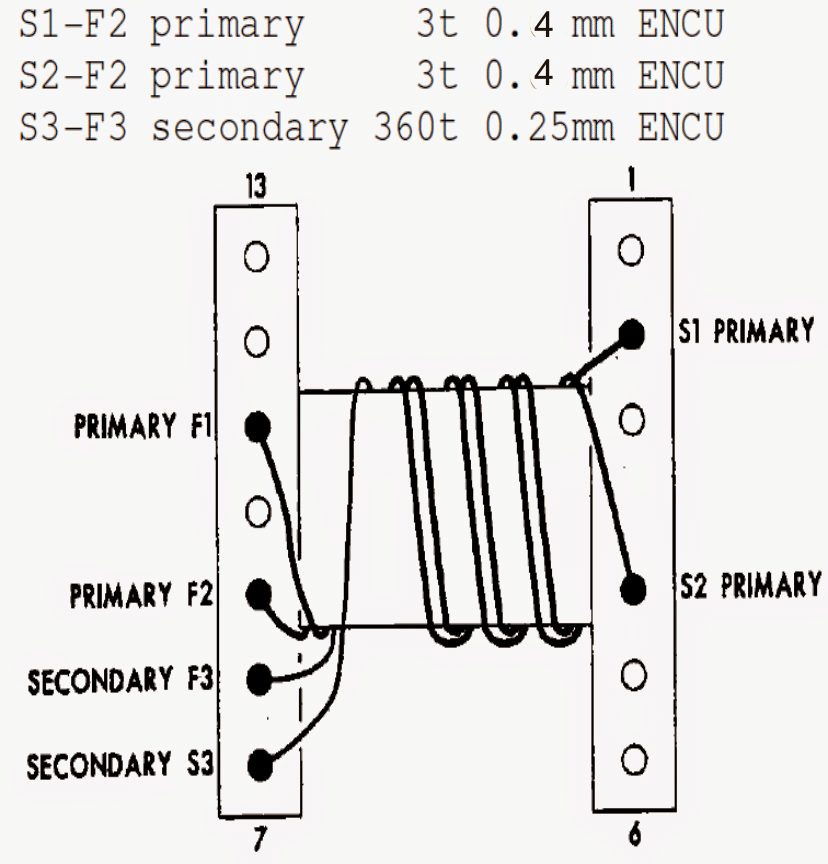Mosquitoes are a big menace to humankind and these are present in every corner of the world. A cool way of avenging yourself could by eliminating these "devils" through electrocution. A mosquito swatter bat is designed just for this. I have explained how to build its electronic circuitry. The idea was requested by Mr. kathiravan d.
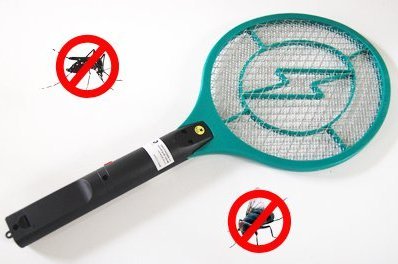
Mosquitoes can be Hard to Eliminate
Mosquitoes are tiny in size but they come in big numbers, and no matter how much we try to eliminate them, these micro pests keep growing with their population.
Today you will find plenty of techniques available in the market that provide us with the options of getting rid of these insects, some are in the form of sprays, some are in the form of coils and mats that need to be burned. Most of these variants are chemical based which either drive away or kill pests due to their toxic nature.
Needless to say if these chemicals have the potentials of harming the pests they would do the same to us in a smaller scale, but nevertheless in the long run they could cause significant health hazards.
Update: Want to know how to build a simple mosquito killer bat without any circuit or battery? Learn More
Using Swatter Bat for Killing Mosquitoes
However there's an innovative method of killing mosquitoes by electrocution which doesn't involve chemicals and also the procedures are clean, without any mess.
Moreover the electrocuting equipment being in the form of a tennis racket makes the swatting playful and provides an opportunity to avenge ourselves from these pests.
The proposed mosquito swatter bat or mosquito zapper circuit can be seen in the diagram given below, the functioning may be understood with the following points:
The shown configuration employs a blocking oscillator concept as used in joule thief circuits, wherein only a single transistor and a center tapped transformer execute sustainable oscillation across the two winding of the transformer.
How the Circuit Functions
R1 along with the preset and the C1 determine the frequency of oscillation. R1 ensures that the transistor never comes within an unsafe zone while adjusting the preset.
TR1 here is a small ferrite core transformer built using the smallest EE type of ferrite core.
The winding inside the coil is calculated for working with 3V DC supply, meaning the circuit becomes compatible with a 3V battery pack made by putting a couple of AAA cells in series.
When power is applied to the circuit, the transistor and the center tapped transformer instantly start oscillating at the specified high frequency. This forces the battery current to pass across the TR1 winding in a push pull manner.
The above switching generates a proportional induced high voltage across the secondary winding of TR1.
As per the winding data, this voltage could be somewhere around 200V.
To further enhance and lift this voltage to a level which may become suitable for generating a flying spark, a charge pump circuit involving a Crockcroft-Walten ladder network is used at the output of TR1.
This network pulls the 200V from the transformer to about 600V.
This high voltage is rectified and applied across a bridge rectifier where the voltage is appropriately rectified and stepped up by the 2uF/1KV capacitor.
As long as the output terminals across the 2uF capacitor are held at some specified distance, the stored high voltage energy inside the capacitor is unable to discharge, and stays in a standby condition.
If the terminals are bought at a relatively closer distance (about a couple of mm) the potential energy across the 2uF capacitor becomes capable enough to break the air barrier and arc across the terminal gap in the form of a flying spark.
Once this happens, the arcing momentarily stops, until the capacitor charges fully to execute another spark, and the cycle keeps repeating as long as the gap distance is kept within the saturable distance of the high voltage.
When this circuit is applied as a mosquito swatter, the end terminals of the 2uF capacitor are appropriately tied or connected across the internal and the external bat mesh layers.
These metal mesh layers are woven and positioned tightly over a sturdy plastic frame in such away that these are held apart at some distance. This distance prevents the high voltage spark from arcing across the meshes while the bat is in a stand by condition.
The moment the bat is swatted over a fly or a mosquito, the insect gets bridged itself between the bat meshes and allows the high voltage to find and easy conducting path through it.
This results in a crackling sound and a spark through the insect, killing it instantly.
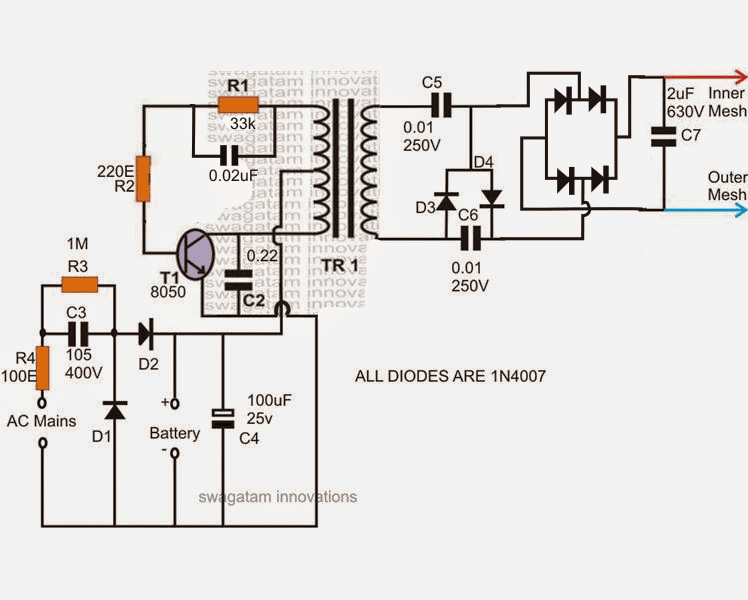
Making the Ferrite Core Transformer
The circuit of the mosquito zapper explained here also includes an small transformerless charger circuit which may be connected to mains for charging the 3V rechargeable battery when the bat stops generating sufficient arcing voltage while swatting the mosquitoes.
TR1 winding details can be found in the following image:
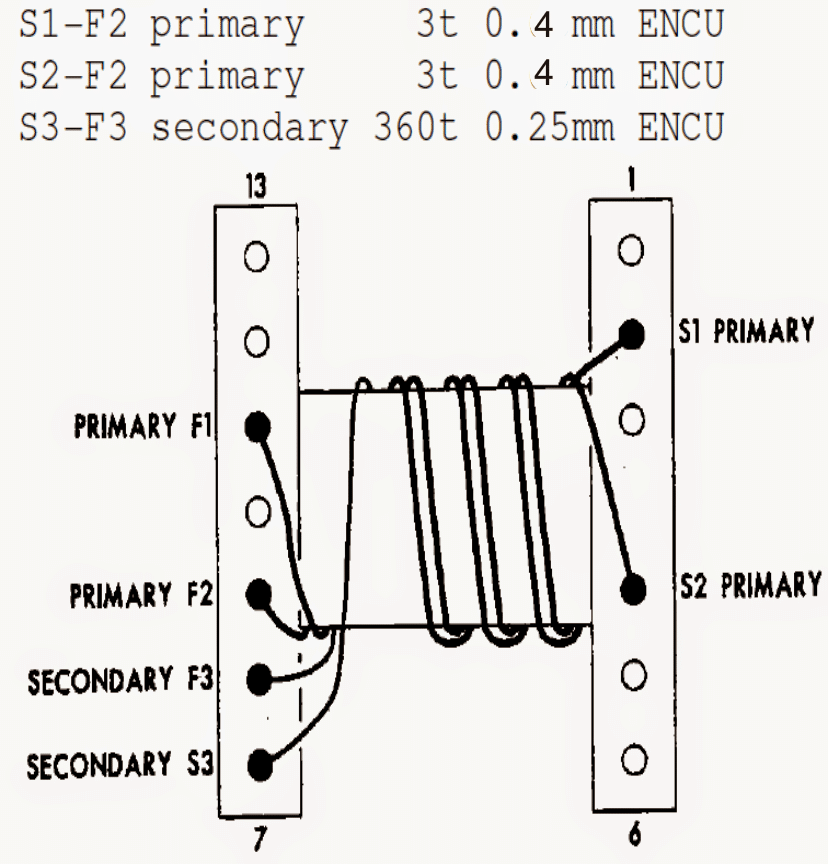
Core: EE19/8/5
Interested to know how to Repair Mosquito Rackets?
Commercial Mosquito Zapper Circuit
The following section discusses the construction details of a high voltage generator circuit which are normally used inside all Chinese or commercial mosquito zapper or mosquito racket units.

In one of my earlier posts I discussed a simple mosquito zapper circuit, in this article we study a similar design which is commercially used in all mosquito rackets, or mosquito bat units.
How this electronic mosquito racket circuit works
The article was originally posted in one of the Chinese electronic sites and I found it quite interesting and an easy design, and therefore decided to share it here.
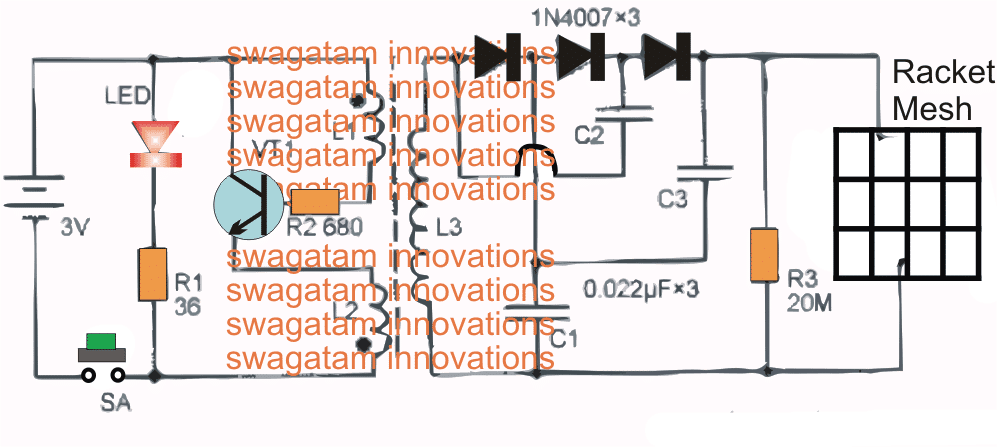
Parts List
- All resistors are 1/4 watt unless specified
- R1 = 36 Ohms
- R2 = 680 Ohms
- R3 = 20 Meg Ohms
- All Capacitors are PPC Type 630V
- C1, C2, C3 = 0.022uF
- Semiconductors
- VT1 = 2N2222 or 8050 Transistor
- D1, D2, D3 = 1N4007 Diodes
- LED = RED LED 20 mA 3mm
- Miscellaneous
- Push Button switch, micro-switch
- 3V or 4V rechargeable Battery
When the power switch SA is pressed, the high-frequency oscillator composed of the transistor VT1 and the step-up transformer T is energized using the 3V DC supply generating a high-frequency alternating current of about 18kHz, boosted by T to about 500V.
This high voltage ranging at 500V is then further stepped up using a ladder network, which is made up of three 1N4007 Diodes, capacitors C1- C3.
This network steps the T output to approximately three times its original value and we get around 1500V which gets stored inside a high voltage PPC capacitor positioned at the extreme end of the ladder network.
This stepped up 1500V is then terminated to the mosquito racket net, which now becomes armed with this high voltage and when ever a mosquito tries to get past the racket net, it instantly gets electrocuted through this high voltage discharge from the PPC capacitor.
An Led can be seen included in the design, it is used for indicating the ON/OFF states of the circuits and also the how much power is left inside the battery. The series resistor R1 decides the intensity of the LED which can be tweaked as per preference to maximize battery life
Component selection
The oscillator transistor used in this Chinese mosquito zapper circuit is a 2N5609, which is an NPN BJT, having a current handling capacity of around 1 amp, however other similar variants such as 8050, 2N2222, D880 etc can also be tried instead of the original number in the design.
The LED can be any 3mm tiny 20mA type of LED, the diodes can be 1N4007 type although fast recovery would work much better, therefore you can also try replacing them with BA159 or FR107 type of fast diodes. The resistors could be 1/8 watt rated or even ¼ watt can be used without issues.
The capacitors must be strictly PPC types rated not less than 630V.
How to Build the High Voltage Transformer
- This is ideally constructed using a 2E19 type ferrite cores and the respective matching plastic bobbin.
- L1 consists of φ0.22mm enameled copper wire or magnet wire with around 22 turns
- L2 is identically wound using φ0.22mm enameled copper wire or magnet wire with around 8 turns
- Finally, L3 which constitutes the secondary winding uses φ0.08mm enameled copper wire and has around 1400 turns.
The above discussed mosquito bat circuit can be also used for killing various kinds of bugs through electrucution using some other suitable format. For example this design could be integrated with a mesh over a dish having a mosquito/bug bait, which might attract the mosquito/bugs and eventually electrocute them as soon as they try to enter the dish through the electrified mesh.
Warning: The above design is not isolated from mains input voltage and therefore will be floating with lethal mains AC, the user is advised to exercise extreme caution while handling or testing the circuit in open and powered condition.
